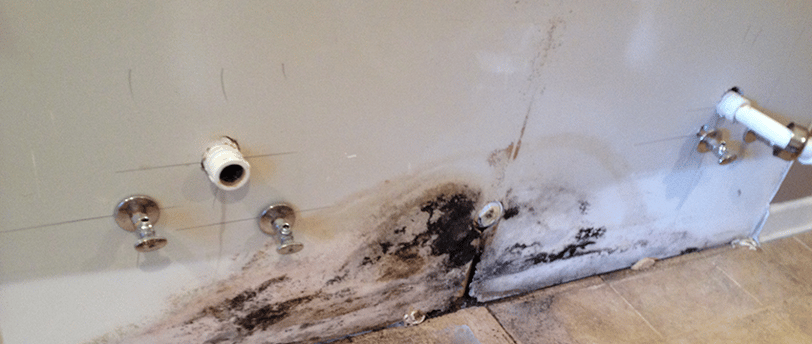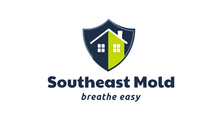How to identify and remove black mold.
Have you noticed musty odors, discoloration on walls or ceilings, or experienced unexplained health symptoms? If so, this post is for you.
Southeast Mold


Black mold. The very words can send shivers down your spine. Often associated with health concerns and property damage, it's a type of mold that homeowners dread discovering. At Southeast Mold, we understand these concerns and want to empower you with the knowledge to identify and safely address black mold in your home.
This blog post will guide you through the process of identifying potential black mold growth and explain why professional removal is often the safest and most effective solution.
What is Black Mold?
The term "black mold" commonly refers to Stachybotrys chartarum, a greenish-black mold that thrives in damp, cellulose-rich environments. This includes materials like drywall, fiberboard, and paper. While not all black-colored molds are Stachybotrys, it's crucial to treat any significant mold growth with caution.
Identifying Potential Black Mold Growth:
While visual identification can be a starting point, it's not always definitive. Here's what to look for:
Visual Appearance: Black mold often appears as dark black or greenish-black patches. It can have a slimy or wet texture when actively growing. However, older, dried mold might appear powdery.
Musty Odor: A persistent, earthy, or musty odor is a strong indicator of mold growth, even if it's not immediately visible. This smell is often more noticeable in damp or poorly ventilated areas.
Water Damage History: Areas that have experienced leaks, flooding, or chronic moisture issues are prime locations for mold growth. Pay close attention to bathrooms, kitchens, basements, and areas around plumbing.
Visible Growth on Specific Materials: Check areas where black mold commonly grows, such as:
Drywall and Wallpaper: Look for dark staining or fuzzy growth.
Wood and Particleboard: Mold can penetrate porous materials.
Insulation: Especially in damp areas.
Around Windows and Doors: Condensation can lead to mold growth.
Behind Appliances: Leaks from refrigerators or dishwashers can create hidden mold.
Important Note: It's impossible to definitively identify the type of mold simply by looking at it. Other molds can also appear black or dark in color. Professional testing is the only way to accurately determine the specific type of mold present.
Why Professional Black Mold Removal is Recommended:
While small, isolated patches of surface mold might be manageable with proper precautions, dealing with significant black mold growth carries potential risks and requires specialized procedures. Here's why professional removal by Southeast Mold is often the best course of action:
Accurate Identification: We can perform air and surface sampling to identify the specific types of mold present, including Stachybotrys chartarum. This helps us understand the potential risks and tailor our remediation approach.
Safe and Effective Removal: Black mold can release microscopic spores into the air, which can be inhaled and potentially cause health issues for some individuals. Our trained technicians use specialized equipment, including HEPA filtration systems and personal protective equipment (PPE), to safely contain and remove the mold without spreading spores.
Addressing the Root Cause: Simply removing visible mold is not enough. We identify and address the underlying moisture issues that are fueling the mold growth. This is crucial to prevent future recurrence.
Thorough Cleaning and Disinfection: After removing the mold-damaged materials, we thoroughly clean and disinfect the affected areas to eliminate any remaining mold spores and prevent regrowth.
Preventing Cross-Contamination: Our professional techniques ensure that mold spores are not inadvertently spread to other unaffected areas of your home during the removal process.
What to Do If You Suspect Black Mold:
Avoid Disturbing the Mold: Do not attempt to scrub or clean significant mold growth yourself, as this can release more spores into the air.
Isolate the Area: If possible, close off the affected area to prevent potential spread.
Improve Ventilation: Increase airflow in the area if it's safe to do so without disturbing the mold.
Contact Southeast Mold: Schedule a professional mold inspection. Our experienced team will assess the situation, identify the source of the moisture, and recommend the appropriate remediation plan.
At Southeast Mold, your health and the integrity of your home are our top priorities. We are committed to providing safe, effective, and thorough mold inspection and removal services. If you suspect black mold in your home, don't hesitate to contact us for a professional assessment and peace of mind. Breathe easy knowing you're in expert hands.
Contact Southeast Mold today for a consultation! 770-744-3383 or info@southeastmold.com
